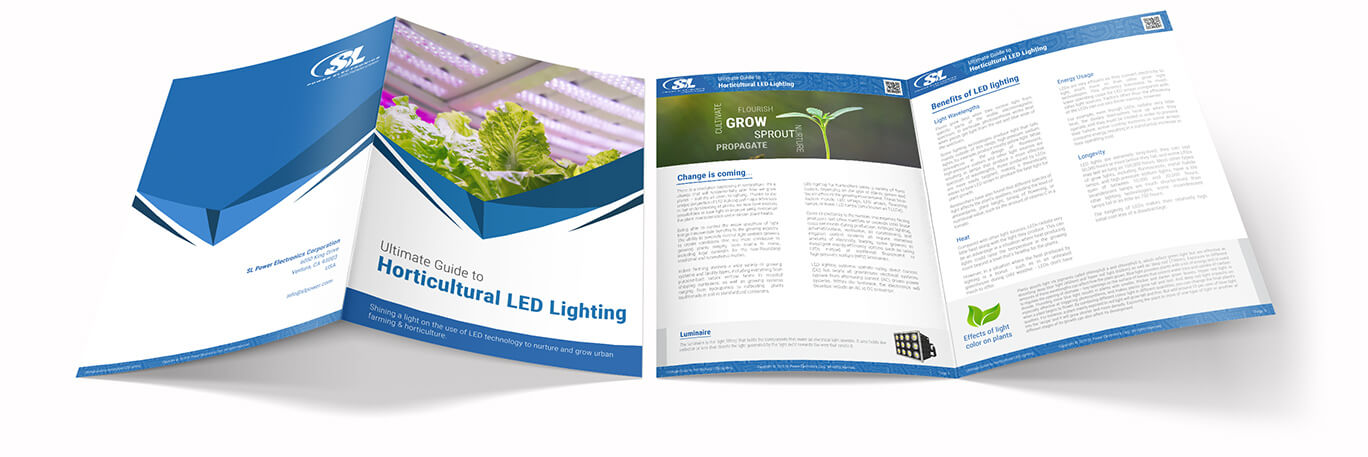SL Power Publishes the “Ultimate Guide to Horticultural LED Lighting”
Veröffentlicht Juni 05, 2019
There is a revolution happening in horticulture. It’s a change that will fundamentally alter how we grow plants – and it’s all down to lighting. Thanks to the unique properties of LED lighting and major advances in our understanding of plants, we now have exciting possibilities to tune light to improve yield, customize the plant characteristics and maintain plant health.
SL Power is at the forefront of the Horticultural LED Lighting revolution. Horticultural Lighting is one of three primary sub-segments SL Power caters to within the broader LED market segment. The growth of Horticultural Lighting and the replacement of incandescent light sources to LEDs is engrained in SL Powers mission to develop highly specialized power conversion solutions that are best in class. To that end, SL Power is happy to publish their Ultimate Guide to Horticultural LED Lighting.

More About Horticultural LED Lighting
Being able to control the entire spectrum of light brings innumerable benefits to the growing industry. The ability to precisely control light enables growers to create conditions that are most conducive to growing plants ranging from acacia to zinnia, including legal cannabis for the now-flourishing medicinal and recreational market.
Indoor farming involves a wide variety of growing systems and facility types, including everything from purpose-built indoor vertical farms to recycled shipping containers, as well as growing systems ranging from hydroponics to cultivating plants traditionally in soil in standardized containers.
LED lighting for horticulture takes a variety of form factors, depending on the type of plants grown and the structure of the growing environment. These form factors include LED strings, LED arrays, flowering lamps, or linear LED lamps (also known as TLEDs).
Costs of electricity is the number one expense facing producers and often matches or exceeds total lease costs per month during production. Artificial lighting, dehumidification, ventilation, air conditioning, and irrigation control systems all require immense amounts of electricity, leading some growers to investigate energy-efficiency options such as using LEDs instead of traditional fluorescent or high-pressure sodium (HPS) luminaires.
LED lighting systems operate using direct current (DC) but nearly all greenhouse electrical systems operate from alternating current (AC) driven power systems. Within the luminaire, the electronics will therefore include an AC to DC converter.